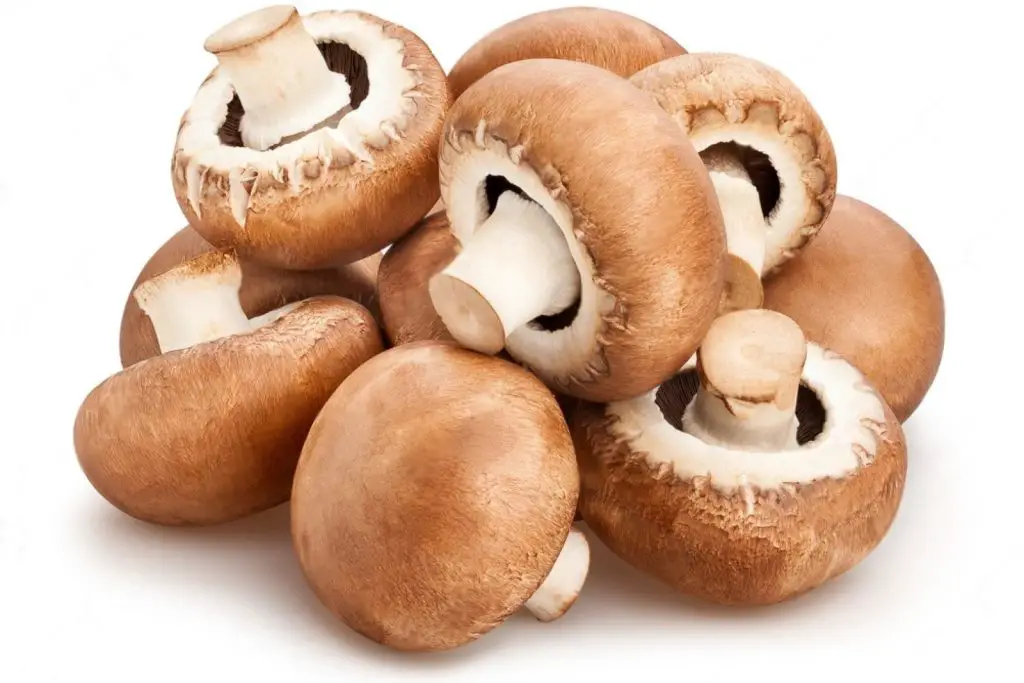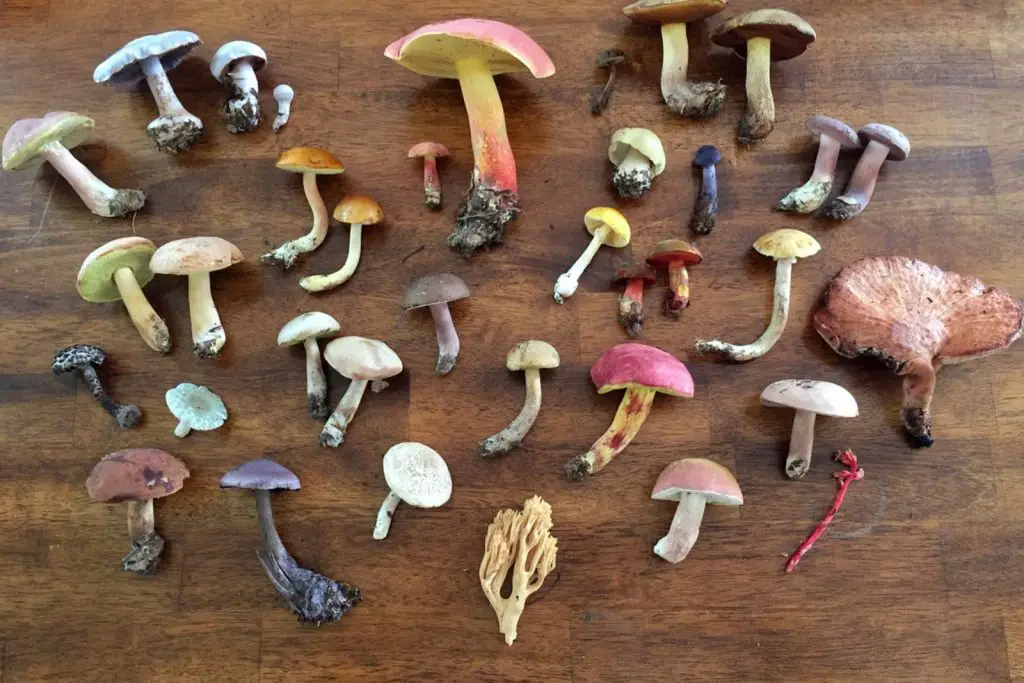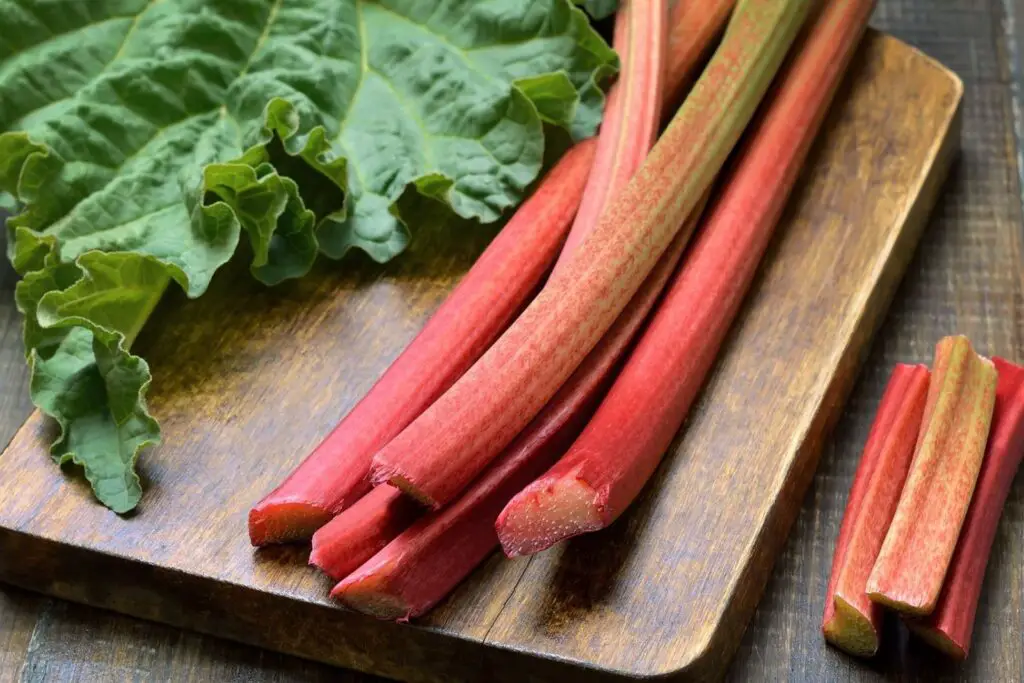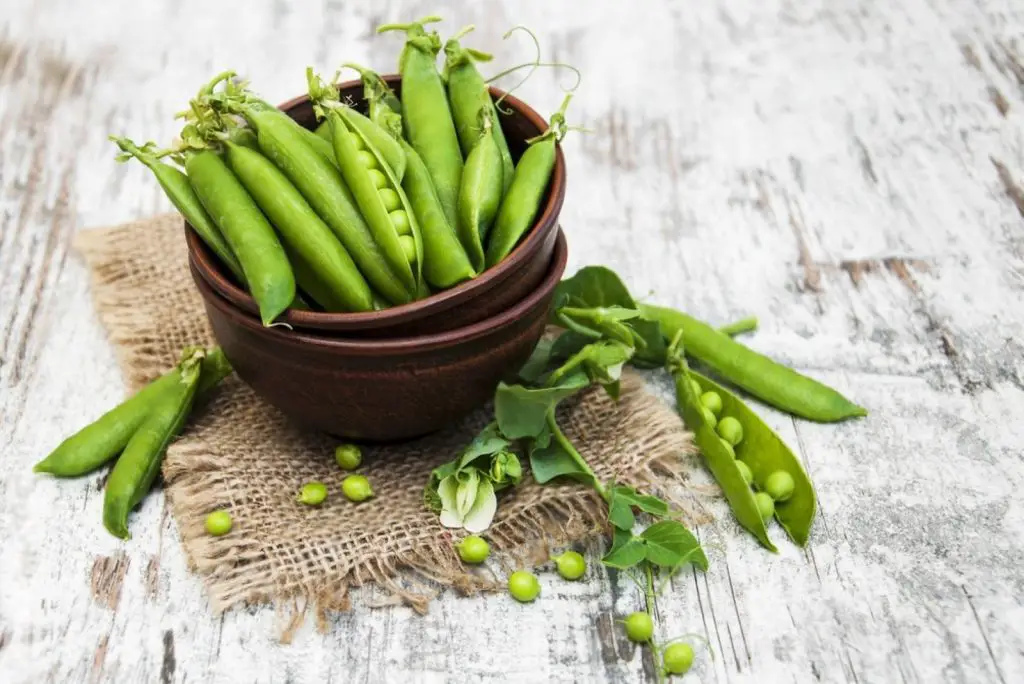
Scotch bonnet peppers are known for their fiery heat and distinctive fruity flavor. These small, vibrant peppers are commonly used in Caribbean and African cuisines to add a spicy kick to various dishes. Whether you’ve grown an abundance of scotch bonnet peppers in your garden or found a great deal at the market, freezing them can be a practical way to preserve their intense heat and flavor for future culinary adventures. This article outlines a step-by-step process for properly freezing scotch bonnet peppers while maintaining their potency and taste.
Learn how to freeze scotch bonnet peppers with these steps:
Step 1: Choose ripe and fresh peppers
When it comes to freezing scotch bonnet peppers, the quality of the peppers you start with significantly impacts the end result. Selecting peppers that are fully ripe and free from blemishes is essential to ensure that you’re preserving the best possible flavor and heat.
- Ripeness Matters: Scotch bonnet peppers should display a vibrant, consistent color that is characteristic of their variety. This color can range from bright orange to red, depending on the specific type. Avoid peppers that are still green or have uneven coloring, as they might not have developed their full flavor potential yet.
- Texture Tells All: Gently squeeze the peppers to assess their texture. Ripe scotch bonnet peppers should feel firm but not overly soft. The flesh should yield slightly to pressure, indicating that they are fully matured and ready to deliver that signature scorching heat.
- A Blemish-Free Choice: Examine the peppers closely for any blemishes, bruises, or signs of decay. Peppers with spots or soft areas are more likely to deteriorate quickly during the freezing process and may negatively affect the overall quality of the frozen product.
- Flavor Concentration: Ripe scotch bonnet peppers have fully developed flavors that are both spicy and fruity. By freezing peppers at their peak ripeness, you’re capturing this rich combination of taste, which will enhance your dishes when you use the frozen peppers later.
Step 2: Wash and prepare the peppers
After selecting ripe and fresh scotch bonnet peppers, the next crucial step is to properly wash and prepare them before freezing. This ensures that any contaminants are removed, and the peppers are ready to be preserved at their best.
- Washing for Cleanliness: Gently washing the peppers under cold water serves multiple purposes. Firstly, it removes any surface dirt, dust, or potential pesticides that might have adhered to the peppers while they were growing. Secondly, washing helps eliminate any microorganisms that could lead to spoilage during freezing.
- Stem Removal: Once the peppers are clean, focus on removing the stems. The stem area can harbor moisture and microorganisms, which can affect the quality of the frozen peppers. Carefully trim the stems using a sharp knife or kitchen scissors. Take your time to ensure that the stems are cleanly and completely removed.
- Slicing Options: Now comes the creative part – how you slice the peppers. Consider your future culinary needs when deciding on the slicing style. You can choose to freeze the peppers whole, halved, or diced, depending on how you plan to use them in your recipes. Dicing is particularly convenient if you want to add controlled amounts of heat to various dishes.
- Uniformity Matters: When slicing the peppers, aim for uniformity in size. This helps with even freezing and thawing later on. It also ensures that you can easily portion out the desired amount of peppers without having to defrost the entire batch.
- Safety Precautions: While scotch bonnet peppers are known for their heat, they can also irritate the skin and eyes due to their capsaicin content. Be cautious while handling the peppers and consider wearing gloves to protect your hands. Avoid touching your face, especially your eyes, after handling the peppers, and wash your hands thoroughly afterward.
Step 3: Blanch the peppers (optional)
Blanching is a technique that involves briefly immersing food in boiling water and then rapidly cooling it in an ice water bath. While blanching is optional when freezing scotch bonnet peppers, it offers several benefits that can enhance both the preservation and the final culinary experience.
- Milder Heat: One of the primary reasons to consider blanching scotch bonnet peppers before freezing is to temper their intense heat. The brief exposure to boiling water can help break down some of the capsaicin compounds responsible for the peppers’ spiciness. This results in a milder heat level, making the peppers more manageable and versatile in recipes that require a less fiery kick.
- Enzyme Inactivation: Blanching also serves as a method of enzyme inactivation. Enzymes are natural substances present in fruits and vegetables that can cause changes in color, flavor, and texture over time. By blanching, you halt the enzymatic reactions, preserving the peppers’ vibrant color and fresh flavor during freezing.
- Improved Preservation: The blanching process helps to clean the peppers’ surface, removing any lingering bacteria or contaminants that may be present. This step can contribute to better preservation and reduce the risk of spoilage during storage in the freezer.
- Texture Considerations: While blanching offers numerous advantages, it’s important to note that it can slightly alter the texture of scotch bonnet peppers. The heat and rapid cooling can cause the pepper flesh to become slightly softer. If you prefer to maintain the peppers’ original texture, you might want to skip the blanching step and proceed directly to freezing after washing and slicing.
To blanch scotch bonnet peppers, bring a pot of water to a rolling boil. Carefully add the pepper slices and let them cook for about 1-2 minutes. Then, promptly transfer the peppers to an ice water bath to cool. This sudden change in temperature stops the cooking process and preserves the texture and color.
Can I freeze scotch bonnet peppers without blanching?
Yes, you can freeze scotch bonnet peppers without blanching. However, be aware that skipping the blanching step might lead to a slightly altered texture and potential loss of color. Proper packaging and swift freezing are crucial to maintain the best quality if you choose to skip blanching.
Step 4: Drain and pat dry
After blanching the scotch bonnet peppers (if you chose to do so), the next crucial step is to properly drain and dry the pepper slices before freezing. This seemingly simple step plays a vital role in ensuring the quality and longevity of the frozen peppers.
- Why Drain?
Blanching involves boiling the peppers briefly to achieve milder heat and improved preservation. During this process, the peppers absorb some moisture, which needs to be removed before freezing. Draining the pepper slices ensures that excess water – along with any remnants of boiling water – is eliminated, preventing the formation of ice crystals and freezer burn during freezing.
- The Drying Process:
After draining the pepper slices, gently pat them dry with paper towels. This delicate process helps remove any remaining moisture on the surface of the peppers. Excess moisture can lead to ice crystals forming on the peppers, which can degrade their texture and flavor over time. By patting the slices dry, you’re minimizing the risk of freezer burn, which can negatively affect the quality of the frozen peppers.
- Avoid Clumping:
Drying the pepper slices is especially important if you plan to freeze them individually. Excess moisture can cause the slices to stick together once frozen, making it challenging to retrieve only the amount you need when cooking. Dry slices are less likely to clump together, allowing you to easily measure and use the desired quantity.
- Minimize Freezer Burn:
Freezer burn occurs when moisture within the food evaporates and then recondenses as ice on the food’s surface. This can lead to a loss of flavor, texture, and overall quality. By draining and drying the pepper slices, you’re reducing the chances of freezer burn, which can compromise the taste and appearance of the frozen peppers.
Step 5: Arrange and flash-freeze
Once you’ve drained, dried, and potentially blanched the scotch bonnet pepper slices, the next step involves arranging them in a strategic manner for freezing. This arrangement, combined with the technique of flash-freezing, plays a vital role in maintaining the quality and convenience of your frozen peppers.
The Importance of Arrangement:
- Individual Freezing: Placing the pepper slices in a single layer on a baking sheet ensures that they freeze individually. If the slices come into contact with one another, they can fuse together as they freeze, making it challenging to separate them later. Keeping them well-spaced on the baking sheet helps maintain the distinctness of each slice.
- Even Airflow: Proper arrangement also facilitates even freezing. Adequate space between the pepper slices allows cold air to circulate freely around each slice. This uniform airflow results in a consistent freezing process that preserves the peppers’ texture and flavor.
How to Arrange:
- Line a baking sheet with parchment paper or a silicone baking mat to prevent the pepper slices from sticking to the surface.
- Lay out the pepper slices in a single layer on the baking sheet. Make sure there is some space between each slice to prevent them from touching.
- If you have a large batch of pepper slices, you might need to use multiple baking sheets or freeze them in batches to maintain the single layer arrangement.
Flash-Freezing Explained:
- Quick and Efficient: Flash-freezing is a rapid freezing technique that involves exposing food items to extremely cold temperatures in a short period. In the case of scotch bonnet pepper slices, this means placing the baking sheet with the arranged slices in the freezer for a few hours, typically until they are completely frozen.
- Preservation of Individuality: Flash-freezing prevents the pepper slices from sticking together. The quick freezing process forms smaller ice crystals, which are less likely to damage the cell structure of the peppers. This preservation of individuality ensures that you can easily access and use the desired amount of pepper slices without thawing the entire batch.
- Minimizing Freezer Burn: Flash-freezing minimizes the chances of freezer burn, which occurs when moisture in the food forms ice crystals on its surface. By freezing the pepper slices individually and quickly, you’re reducing the risk of moisture loss and the subsequent development of freezer burn, preserving the peppers’ quality.
How to Flash-Freeze:
- After arranging the pepper slices on the baking sheet, place the baking sheet in the freezer on a flat surface.
- Leave the pepper slices in the freezer for a few hours, or until they are fully frozen. The exact time can vary based on your freezer’s temperature and the thickness of the slices.
- Once frozen, the pepper slices can be transferred to airtight freezer-safe containers or resealable bags for longer storage.
Step 6: Package and seal
After successfully flash-freezing the scotch bonnet pepper slices, the next crucial step is to properly package and seal them for long-term storage. This meticulous packaging process plays a significant role in ensuring that your frozen pepper slices remain in prime condition, ready to add their fiery touch to your dishes whenever you need them.
Why Proper Packaging Matters:
- Preservation of Quality: Proper packaging prevents exposure to air, moisture, and temperature fluctuations, all of which can deteriorate the quality of frozen food over time. For scotch bonnet pepper slices, maintaining their vibrant color, intense flavor, and individuality hinges on effective packaging.
- Minimizing Freezer Burn: Freezer burn occurs when food is exposed to air, causing moisture to evaporate and form ice crystals on the surface. This can lead to changes in texture, flavor, and overall quality. Proper packaging that eliminates air and moisture significantly reduces the risk of freezer burn.
- Preventing Odor Transfer: Scotch bonnet peppers have a potent aroma and flavor. Properly sealed packaging prevents the odors of the peppers from transferring to other foods in the freezer, ensuring that your frozen pepper slices don’t compromise the flavors of other items.
How to Package and Seal:
- Use Airtight Containers or Bags: Choose airtight freezer-safe containers or resealable plastic bags specifically designed for freezing. These containers are made to withstand low temperatures and prevent moisture and air from entering.
- Transfer the Pepper Slices: Once the pepper slices are fully frozen, transfer them into the containers or bags. Arrange them in a single layer if possible, as this makes it easier to retrieve the desired amount later.
- Remove Excess Air: Before sealing the containers or bags, squeeze out as much air as possible. Excess air can create an environment conducive to freezer burn. You can use a vacuum sealer for optimal air removal, or simply press out the air manually if using resealable bags.
- Seal Tightly: Seal the containers or bags securely to prevent any air from getting in. If using resealable bags, consider double-bagging for added protection.
Step 7: Label and date
Once your scotch bonnet pepper slices are securely packaged and sealed for freezing, it’s crucial to take a moment to label and date the containers or bags. This simple yet essential step adds a layer of organization and information that can be invaluable when you’re ready to use the frozen peppers.
The Importance of Labeling:
- Content Identification: Labeling the containers or bags with the contents – in this case, “scotch bonnet peppers” – ensures that you know exactly what you’re reaching for when you open the freezer. It eliminates any guesswork and confusion, especially if you have multiple frozen items.
- Quick Access: When you’re in a hurry while cooking, having clear labels makes it easy to identify and retrieve the specific ingredient you need. This prevents the need to defrost items unnecessarily, saving you time and ensuring you can enjoy the peppers’ flavors at a moment’s notice.
- Date of Freezing: Adding the date of freezing provides crucial information about the peppers’ freshness and storage duration. Over time, frozen foods can gradually lose flavor and quality. By noting the freezing date, you can keep track of how long the peppers have been stored and use them before they start to decline in quality.
- Additional Notes: If you blanched the peppers before freezing or if you have any other specific information you’d like to remember, such as the source of the peppers or any special instructions for use, jotting down these notes on the label can be incredibly helpful.
How to Label:
- Use a permanent marker or label maker to write directly on the container or bag. If you prefer not to write directly on the packaging, you can affix a piece of masking tape or adhesive label and write on that instead.
- Include the following information on the label:
- Content: “Scotch Bonnet Peppers”
- Date of freezing: Month, day, and year
- Additional notes (optional): “Blanched” or any other relevant information
Step 8: Store in the freezer
After all the careful preparation, arranging, and packaging, the final step is to find the optimal spot in your freezer for storing the scotch bonnet pepper slices. This placement, along with understanding the recommended storage duration, is essential for preserving the peppers’ quality until you’re ready to use them.
Choosing the Right Spot:
- Coldest Part of the Freezer: The coldest part of your freezer is usually towards the back and at the bottom, as cold air tends to sink. This area maintains a more consistent temperature, reducing the chances of temperature fluctuations that can compromise the quality of the frozen peppers.
- Avoiding Temperature Changes: Frequent opening and closing of the freezer door can lead to temperature fluctuations. Try to minimize how often you open the freezer, especially when retrieving items, to maintain a stable environment for your frozen peppers.
The Role of Temperature:
- Temperature Stability: The freezing process halts the growth of microorganisms and enzymes that can degrade food quality. Storing the scotch bonnet pepper slices at a consistently low temperature keeps them in a state of suspended animation, ensuring they retain their color, flavor, and spiciness.
Recommended Storage Duration:
- Up to 6 Months: While scotch bonnet peppers can maintain their quality for up to 6 months in the freezer, it’s important to note that the flavor and spiciness may gradually diminish over time. To fully enjoy the peppers’ intense heat and flavor, it’s best to use them within the first few months after freezing.
- Packaging Matters: Proper packaging and sealing, along with suitable placement in the freezer, play a significant role in extending the storage life of the peppers. If you notice any signs of freezer burn or loss of quality, it’s a good indication that it’s time to use up the remaining peppers.
Other related questions
How do I defrost scotch bonnet peppers?
To defrost scotch bonnet peppers, transfer the frozen slices to a plate or container. Place them in the refrigerator for several hours or overnight to thaw gradually. Once thawed, use the peppers in your recipes as desired.
Can I use frozen scotch bonnet peppers directly in recipes?
Yes, frozen scotch bonnet peppers can be added directly to recipes like soups, stews, sauces, and marinades. Their intense heat and flavor infuse dishes, adding a fiery kick. Adjust quantities to match desired spiciness, knowing that frozen peppers seamlessly contribute to various culinary creations.
Can I refreeze scotch bonnet peppers?
Refreezing scotch bonnet peppers is not recommended. Thawed peppers undergo texture and flavor changes due to moisture loss during thawing. To maintain quality, use thawed peppers promptly and avoid refreezing.
How do I know if the scotch bonnet peppers have gone bad after being frozen?
Signs of bad frozen scotch bonnet peppers include freezer burn (dry, discolored patches), loss of vibrant color, mushy texture, and off or rancid odor. Taste may also be compromised. Proper packaging and storage help prevent deterioration.
What dishes can I use frozen scotch bonnet peppers in?
Frozen scotch bonnet peppers can be used in a variety of dishes, such as soups, stews, sauces, curries, and marinades. Their intense heat and distinct flavor add a fiery kick to your culinary creations. Adjust the quantity of peppers based on your desired level of spiciness in each dish.
Can I freeze scotch bonnet pepper mash or hot sauce?
Yes, scotch bonnet pepper mash or hot sauce can be frozen for long-term storage. Transfer the mash or sauce into airtight containers or ice cube trays, then freeze. Thaw and use portions as needed to infuse dishes with the bold flavor and heat of scotch bonnet peppers.
Can I freeze scotch bonnet peppers stuffed with ingredients?
Yes, scotch bonnet peppers stuffed with ingredients can be frozen, but consider the potential texture changes in the stuffing upon thawing. Choose ingredients that freeze well and be aware that some items might become softer or release moisture during the freezing process. Proper packaging and labeling help maintain the overall quality of the stuffed peppers during storage.
Can I freeze scotch bonnet peppers in oil?
While possible, freezing peppers in oil carries botulism risk due to anaerobic conditions. If freezing, blanch peppers, ensure they’re fully dry, and use small portions. Alternatively, consider freezing without oil or using other preservation methods.
Can I use frozen scotch bonnet peppers for pickling?
Frozen peppers might have softer texture post-thaw, impacting pickling quality. For best results, use fresh peppers for pickling projects, ensuring desired crispness and texture in the final product.








